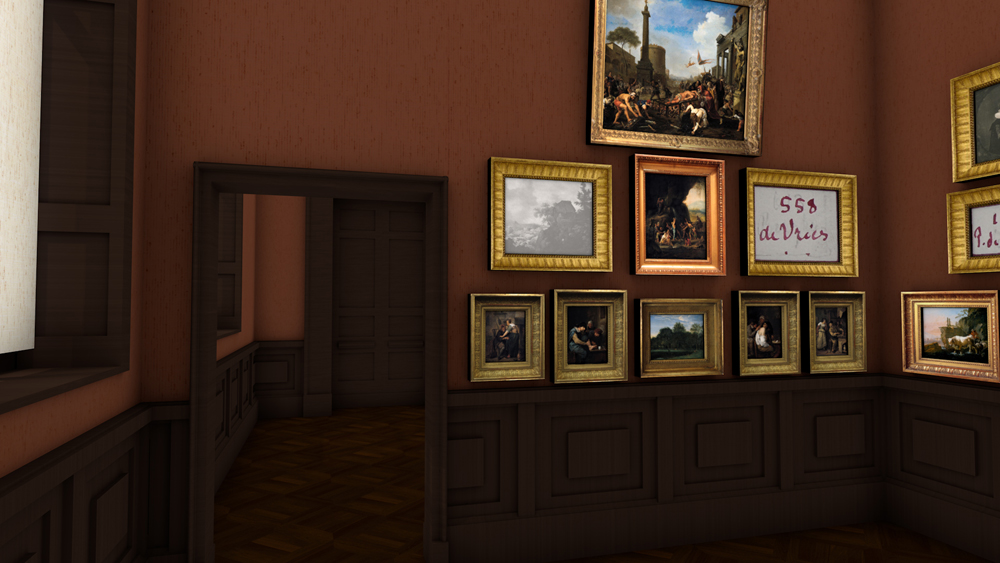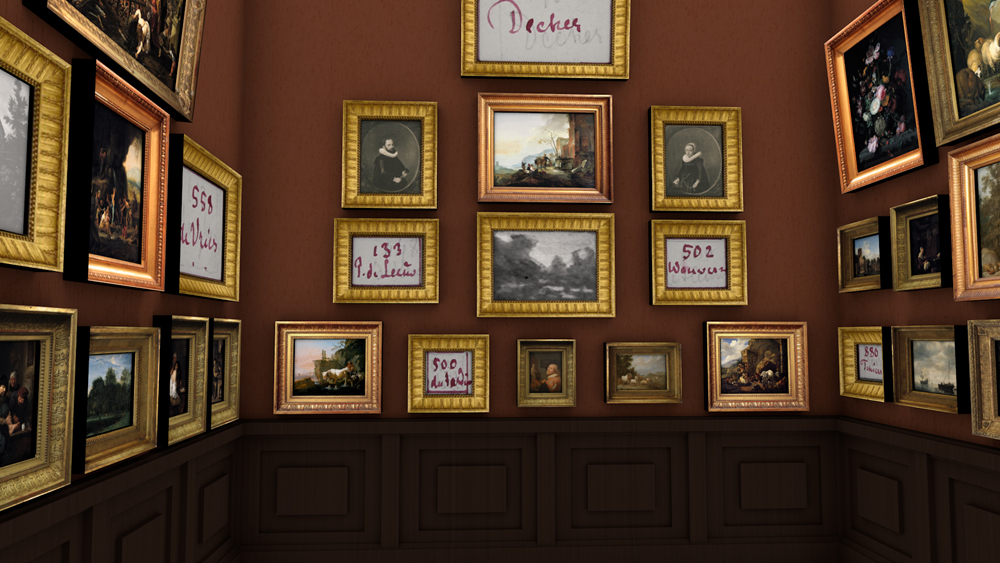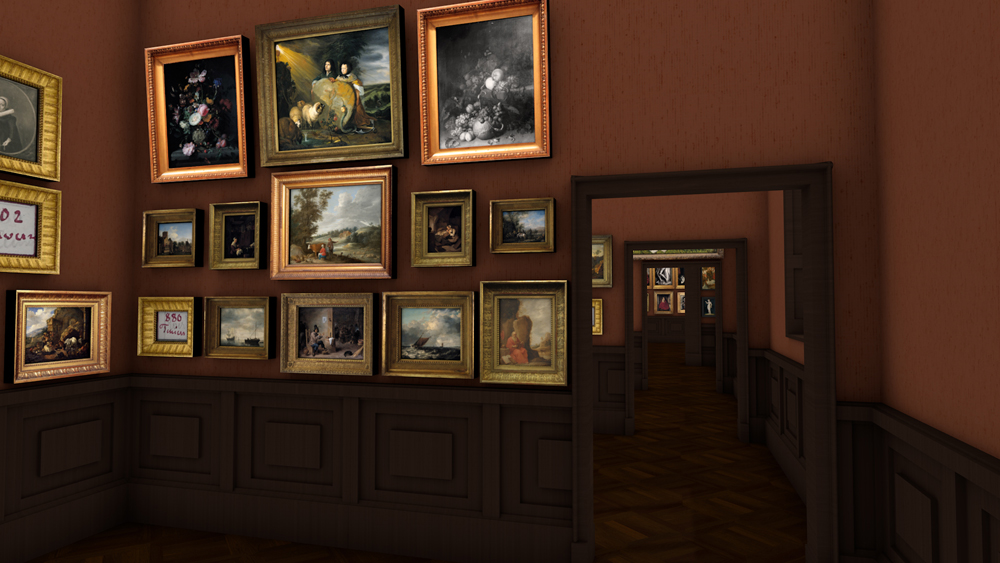1878 Cabinet 4
Jan Steen
vs David Teniers
On the cabinet’s side walls, two masters of the peasant genre were placed opposite each other: the Fleming David Teniers the Younger and the Dutchman Jan Steen.
On the right wall, the highly respected David Teniers the Younger was represented with four paintings. The “St Jerome” as well as the “Smoker at an Inn” in the lower register had only been acquired about ten years earlier from the princely Schönborn collection. At the time of the opening in 1878, the “Landscape with Milkmaid and Shepherd” had been part of the collection for merely two years. This painting was flanked by delicately painted peasant interiors by Cornelis Bega. Displayed on the opposite wall was a genre-like Old Testament scene by Jan Steen: “Moses Striking the Rock”. Two crude scenes at a peasant inn by this Dutch painter were exhibited as well. In the lower register, these framed the “Foot Operation” and “Back Operation” by Adriaen Brouwer. As if to soothe the violent emotions on display, a cheerful “Forest Clearing” by Adriaen van de Velde was placed in the centre.

Eventhough director Malß had changed the designation of the room from VI to III, the presentation could not have been executed in the third cabinet: the end wall of that room featured no door.
Basis
for the reconstruction
Städel director Gerhard Malß had changed the hanging plans for Cabinets 3-6, which were supposed to mainly feature seventeenth-century Dutch and Flemish paintings, a number of times. In the process, he changed the numbering of the rooms in such a manner that the presentation designs cannot easily be transferred from one room to the other.
The sketched architecture occasionally deviates from the actual rooms as well, as is also the case among the other hanging plans. This further complicates the interpretation of our sources.
That is why, for the reconstruction presented here, we have decided to ignore the renumbering of the rooms. In the case of Cabinet 5, we have also swapped the paintings on the two short walls, as only then the actual size ratios of the walls and the doors match. This occasional free handling of the visualisations is justified insofar as there is hardly any substantive reasoning behind the order of the cabinets. In the recreated version, however, the focus has lightly shifted. From landscape painting, which is placed rather low in the hierarchy of art genres, one passes peasant genres and domestic figure pieces to arrive at the more prestigious portraits and history paintings. In the individual cabinets, the visitor was able to deduce the respective theme through comparative viewing, while the use of symmetrical pendants on the one hand, and variation on the other, constituted the leading aesthetic principles.






